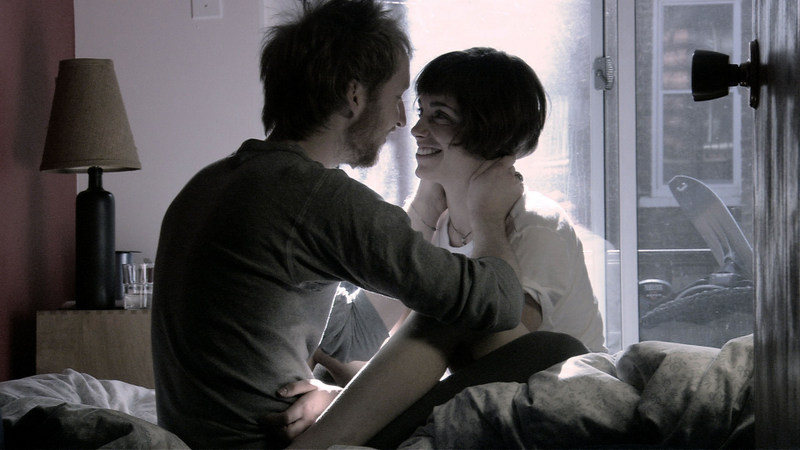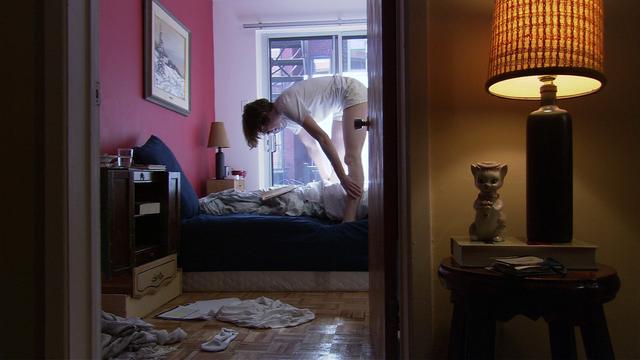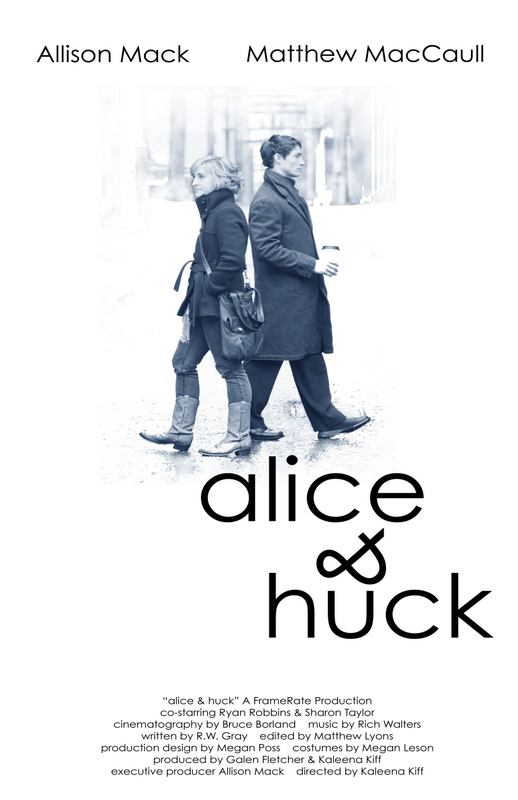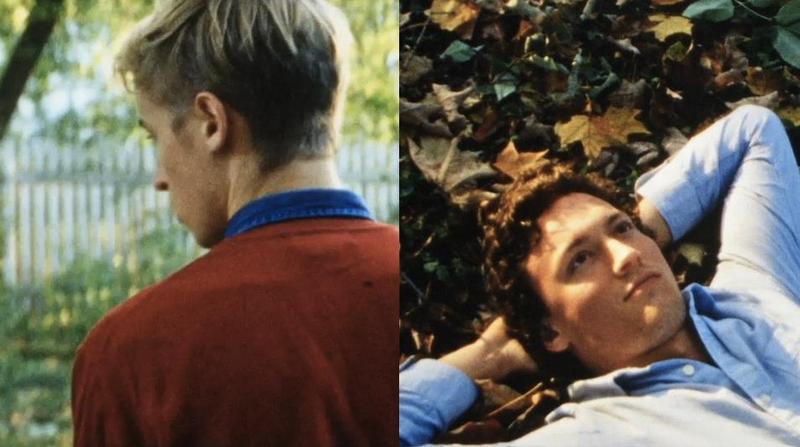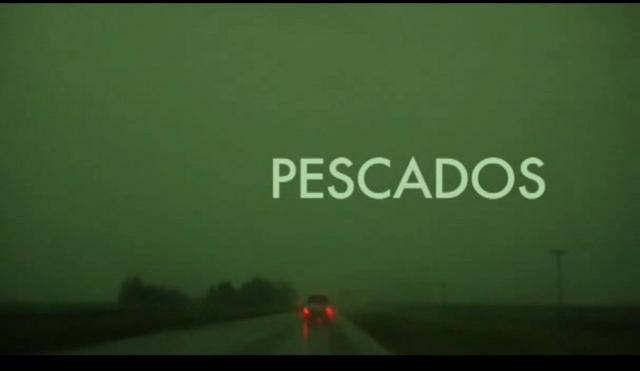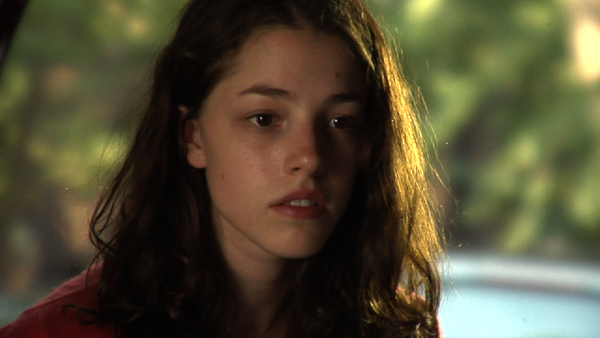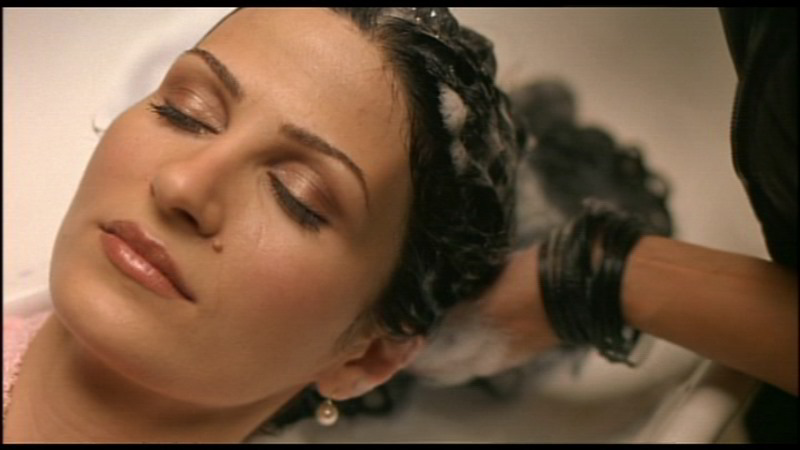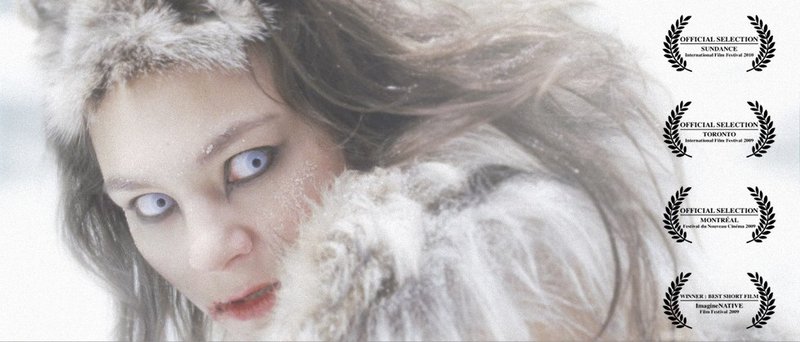
Contributing Editor Pat Keane has penned here a fascinating account of the various endings of John Steinbeck’s The Grapes of Wrath (one ending) and John Ford’s movie of the novel (two endings) and the political implications of all three. Using the novel & movie as a filter, he draws a portrait of an era, delivers a lesson on American history and forges trenchant parallels with our current recession/election cycle. This is an important essay not just for its incisive analysis of the way art, politics and personal calculation converge to construct a momentous work but also for its portrayal of the men involved (including producer Darryl F. Zanuck who actually shot the film’s final ending himself) and its insight into late capitalism and the American psyche. The essay is packed with nuggets of little known information and written with Pat’s usual brio, intellectual energy and passion for research.
I have linked to the text of Nunnally Johnson’s original screenplay in case you want to look at that. The author photo above was taken by me at Mrs. London’s Bakery and Cafe on Broadway in Saratoga Springs earlier this summer.
dg


/
Though John Steinbeck published twenty-seven books (sixteen of them novels), the last in 1962, the year he was awarded the Nobel Prize for Literature, his three major works, collectively dubbed “The Dustbowl Trilogy,” were crowded into just three years. Written in the middle thirties of his own life and of the century’s, they are In Dubious Battle (1936), the novella Of Mice and Men (1937), and The Grapes of Wrath (1939). Though, since his death in 1968, Steinbeck’s critical reputation has declined, the last two works retain their popularity. That both endure is attributable in no small part to their frequent assignment in high school classes and to their film versions, well-made movies that have buttressed the books’ appeal to general or “middlebrow” readers. Nevertheless, despite the mixture of fatalism and sentimentality that mar both, Of Mice and Men and The Grapes of Wrath deserve their endurance, certainly on humane grounds and, whatever our critical reservations, on reasonably substantial aesthetic grounds as well. This is especially true of Steinbeck’s major achievement, The Grapes of Wrath, now approaching the 75th anniversary of its publication. It is certainly a novel worth contemplating in 2012, in the midst of a new major drought and deep recession, if not Depression, and with a troubled and polarized nation on the verge of a crucial presidential election.
As my title suggests, I want on this occasion to focus, from both an aesthetic and sociopolitical perspective, on what might be called three “endings” of The Grapes of Wrath. I also intend to conclude by emphasizing the Romantic-Transcendentalist elements of the climactic scene of the novel: the ending as written by Steinbeck. The other two “endings” are those of the film, which opened in 1940, within a year of the novel’s publication. Not only does the movie alter Steinbeck’s conclusion; the film itself had alternate endings. The original final scene, shot by the director, John Ford, was replaced by a new ending, insisted upon and shot by the film’s producer, Darryl F. Zanuck. In its initial theatrical release, as in television showings and in the DVD, the film ends as Zanuck intended it to. Since I want to follow Steinbeck, coming to my own ending by focusing on the novel’s final scene, I’ll begin with the film version.

1
Lavishly praised when it appeared in 1940, often criticized in the 1960s, Ford’s adaptation of The Grapes of Wrath now seems—though, as in the case of the novel itself, not without reservations—to have been admitted into the canon of classic American films. It gained a wide new audience with the release of the DVD in 2004, midway through the presidency of George W. Bush. As a prep-school student, a youthful Bush had made two pronouncements germane to the film and prophetic of certain aspects of his administration, especially what many would see as his attempt to undo, in the name of Franklin Roosevelt, much of the Roosevelt legacy: “The Grapes of Wrath is a Commie movie,” young George opined when he saw the film in the early ‘60s, gratuitously adding that “the unemployed are lazy.” Such retrograde attitudes, expressed at the very time when others were condemning the film’s dilution of the novel’s radicalism, serve to remind us of the political obstacles the film faced back in 1939-40. I’ll be emphasizing the artistry of the film; but to fully appreciate that artistry requires a brief sketch of the political context in which the novel was published and, a year later, the film made.
The Grapes of Wrath, though a runaway best-seller in 1939, was, we have to remind ourselves, an immensely controversial book—banned and sometimes burned in California, Oklahoma, and even denied space in the libraries of Buffalo, N.Y. Steinbeck, it was claimed, had perpetrated an un-American lie against capitalism. His novel was a grossly exaggerated fiction camouflaging Communist propaganda (in addition, it contained coarse language). So controversial was the novel that, in an attempt to shield the film version from political opposition, it was cloaked with a dummy shooting title, Highway 66. Given the political atmosphere in the country, and in Hollywood, at that time, one may wonder how the film came to be made at all. After all, in 1940 the Dies Committee (forerunner of the House Un-American Activities Committee of the 1950s), already had its nose to the ground, sniffing out Hollywood Popular-Fronters and Communists. The picture seems an even more remarkably brave and liberal undertaking when we consider that the studio, Twentieth-Century-Fox, was owned by the mighty Chase Bank, and that the producer, Zanuck, was not only a Hollywood mogul but an anti-union Republican. Fortunately, the wife of the bank president happened to love Steinbeck’s novel, and didn’t want it distorted. As for Zanuck: the detective he hired to investigate the migrant workers’ camps in California’s Central Valley reported that conditions were even worse than Steinbeck had depicted. The same conclusion had been independently reached by Eleanor Roosevelt, who reported the workers’ misery in her influential newspaper column. Of course, back then she too was often dismissed as a “pinko.”
Though hardly aligned with the politics of either of the Roosevelts, Zanuck pushed ahead with the project. He deserves credit for that—and for his astute choice of talent. The stellar cast included Henry Fonda, selected to play Tom Joad—the role of his career, and one for which he probably should have won the Oscar awarded to Jimmy Stewart for The Philadelphia Story. In what was also the finest performance of his career, John Carradine was no less perfectly cast: as the Preacher, Jim Casy. Jane Darwell played Ma, a performance that earned her an Academy Award for Best Supporting Actress. Zanuck made three other superb decisions: choosing Nunnally Johnson as screenwriter, the great Gregg Toland as cameraman, and, of course, John Ford as director.
Ford’s work on the film earned him an Academy Award. Indeed, it’s hard to imagine a director better suited to translate The Grapes of Wrath to the screen. Though he later voted for Richard Nixon and strongly supported the Vietnam War, Ford was, in 1940, not only a great director but a liberal: a Hollywood union leader and a New Dealer. He was also the son of Irish immigrants (both from Co. Galway). As several of his films reveal, John Ford was an artist haunted by dispossession from the land and the Great Hunger, the Irish Famine. He was therefore acutely sensitive to Steinbeck’s saga of the drought-stricken Okies, driven from the Dust Bowl, and migrating to a supposed promised land, California, only to be greeted with prejudice, hardship, economic exploitation, and the ever-present threat of starvation.
Discussing the artistic impact of Ford’s ancestry, and comparing the situation in The Grapes of Wrath with the Great Famine, Irish novelist and critic Thomas Flanagan has rightly insisted that the Leave-taking scenes in many of Ford’s films tap into the director’s emotional response to the Irish Famine and Diaspora. Two of the most poignant and indelible scenes in The Grapes of Wrath, both in the novel and the film (both of them risking and yet transcending mere sentimentality) are indeed Leave-taking scenes. The first is that of Ma leaving the Joads’ sharecropper’s shack in Oklahoma and tenderly fingering, before she burns them, the mementoes of a lifetime: photographs, clippings, and souvenirs. In the second and most important Leave-taking, we see Tom saying farewell to Ma at night and walking off over the horizon. Visually and thematically, this scene is the film’s most crucial. Fonda and Jane Darwell were as fully aware as Ford that this was their central moment in the film, yet the director refused to let them rehearse. The scene was shot in one take, and the result demonstrates the rightness of Ford’s decision. Along with the power of the acting, the scene is visually memorable for its chiaroscuro effects, the play of light and darkness. (The achievement is essentially Toland’s, but Ford, collaborating with his brilliant cinematographer, had Fonda conceal a small lamp in the palm of his hand to capture the dramatic under-lighting).
Given the attention he paid it, it’s no surprise that this is the scene with which Ford intended his film to end. In doing so, of course, he and his screenwriter were consciously altering not only Steinbeck’s sequence but his political emphasis.
To begin with, Johnson’s screenplay shifts the setting. In the novel, Tom, having killed the union-buster who murdered his friend Casy, is hiding in a cave; it’s there that the final scene with Ma occurs. In the film, it takes place at the edge of the outdoor dance floor at the government-run camp. This is significant, highlighting the point of Johnson’s decision to change Steinbeck’s sequence by placing the government camp scenes toward the end. Ford, a New Dealer himself, concurred. Indeed, he enhanced Steinbeck’s depiction of this camp, the one spot of light in the Joad’s journey, by having the camp director played by an actor who not only resembled Franklin Roosevelt, but imitated his mannerisms. The point being made by Johnson and Ford could hardly be clearer: just as the New Deal saved capitalism by taking the wind out of the sails of socialism, so the film’s government-run camp directed by the FDR-lookalike offers us enlightened capitalism as a counterweight to the potentially revolutionary force embodied in the transformed preacher, Jim Casy, and in his eventual disciple, Tom Joad.
To some extent, then, both screenplay and film dilute Steinbeck’s political radicalism. At the same time, it’s this scene that brings together the Transcendentalist motifs Steinbeck had put in the mouth of Jim Casy: the novel’s version of Jesus Christ (JC). Casy is a messianic prophet quarried out of three visionaries admired by Steinbeck: William Blake, Ralph Waldo Emerson, and Walt Whitman. A fallen preacher and dispossessed wanderer, Casy comes to believe that “all men got one big soul ever-body’s a part of” (33), discovering in the wilderness that “he didn’ have no soul that was his’n,…foun’ he just got a little piece of a great big soul” (570). This is Steinbeck’s colloquial literalization (and inevitable simplification) of the Emersonian vision of “self-reliance” merged with the Transcendental “Over-Soul.” In his essay of that title, which Steinbeck had read, Emerson describes that “Unity…within which every man’s particular being is contained and made one with all other; that common heart.” Though we “live in succession, in division, in parts and particles,” it remains true that “within man is the soul of the whole…to which every part and particle is equally related; the eternal ONE” (Essays and Lectures, 385-86). As Tom tells Ma, “maybe like Casy says, a fella ain’t got a soul of his own, but on’y a piece of a big one—an’ then…” “Then what, Tom?” asks Ma. And here—with the film following the novel precisely—we have Tom’s famous visionary speech. In assuming the mantle of fallen Casy, Tom, in both novel and film, perpetuates and politicizes the fusion, Romantic and Transcendentalist, of the one and the many in the Emersonian Over-Soul.
Then it don’ matter. Then I’ll be all aroun’ in the dark. I’ll be ever’where—wherever you look. Wherever they’s a fight so hungry people can eat, I‘ll be there. Wherever they’s a cop beatin’ up a guy, I’ll be there. If Casy knowed, why, I’ll be in the way guys yell when they’re mad an’—I’ll be in the way kids laugh when they’re hungry an’ they know supper’s ready. An’ when our folks eat the stuff they raise an’ live in the houses they build—why I’ll be there. See? God, I’m talkin’ like Casy. (572)
In the novel, as Ma leaves the cave, “out of the dim sky the rain began to fall, big drops and few, splashing on the dry leaves heavily” (573). Like the earlier hint of an impending rainstorm (567), this second rain-image framing Tom’s Leave-taking prefigures the flood, the consciously Biblical deluge with which Steinbeck—recalling the terrible floods that hit Visalia, California, in early 1938—will end his novel. The book’s climax comes in a desolate and rain-soaked barn to which the remnant of the Joad family has been driven by the rising waters.

2
I’ll return to, and conclude with, that scene, the finale of the novel. There remains the scene with which the film ends. It could hardly be, in 1940 America, the scene written by Steinbeck; indeed, as earlier mentioned, it is not even the farewell between Tom and Ma, the final scene shot by Ford. His film completed, the director was off on his yacht when he received a shore-to-ship cable from the producer. Zanuck wanted to add a coda, almost certainly because he thought Ford’s final image, that of a fugitive Tom striding off to become a union activist, too politically provocative. Either because he was in his cups or because he trusted Zanuck not to spoil his film, Ford went along, even suggesting that the producer shoot the final scene himself.
He did, utilizing several pages from earlier chapters (20 and 28) in the novel. As it happens, in his original screenplay, Nunnally Johnson had fused these two pages (383 and 577 of the novel), though he subsequently relegated the whole reconfigured passage to an appendix attached to the screenplay. Zanuck retrieved it for the film-ending he wanted, the one we’re all familiar with: Ma and Pa Joad in the truck, with Ma announcing that women see differently than men, that “it’s all one flow” for women, who see life as a “stream.” Like a stream, people too keep “goin’ on.” “We ain’t gonna die out.” “We’re the people that live. They ain’t gonna wipe us out. Why, we’re the people—we go on.”
Commercially, and in terms of audience-appeal, Zanuck’s decision was astute. Echoing the opening line of the U. S. Constitution, endorsing American endurance, and satisfying the upbeat demands of a “Hollywood ending,” how could Ma’s peroration fail with audiences? It didn’t, though there have been critical repercussions. The accusations began as early as 1942, when James Agee’s was the sole dissenting voice in a chorus of praise, and peaked in the 1960s. Writing at that time, the most formidable film critic of her era, Pauline Kael, said she now found the film “embarrassingly sentimental.” While Agee had lamented the movie’s failure, despite the talent expended on it, to portray “real people,” Kael, who seldom if ever pulled her punches, went so far as to pronounce the movie “phony.” (Kael, I Lost It at the Movies, 289; Agee, Agee on Film, 1:23, 31). In the politically-activist atmosphere of the ‘sixties, many (decidedly not including young George Bush) deemed the film not only inauthentic but uncourageously quietist. Taken together, the omission of Steinbeck’s final scene and the upbeat ending added by Zanuck—extolling the basic goodness, resilience, and survival of working people—were seen as a betrayal of Steinbeck’s political passion and, artistically, as a censoring and distortion of the more overtly bleak, though quietly transformative, climax of his novel.
There is no question that Zanuck’s coda de-radicalized the novel’s politics, even softened the political implications of Ford’s ending. But for many of its viewers, the film transcends both this final scene, as well as the responsibility-evading opening scroll in which we are informed that “no one was to blame” for the tragedies of the 1930s. Despite that disclaimer and the final uplift, what we actually have on the screen is not only a paean to the common man and woman, but a savage indictment of capitalist greed. However de-politicized it has seemed to some, the film evokes in most of its viewers a profound empathy along with resentment of the social injustices and abject misery which a cruel Nature, and a no less cruel economic system, inflicted on many thousands of dispossessed Americans. In terms of Steinbeck’s vision, the film, despite its alterations of the novel, remained faithful in its fashion.
For the most part, in the film version of The Grapes of Wrath, art triumphed over both ideology and sometime even over conscious intention. Ford’s artistic honesty and his passion for social justice were perfectly complemented by the splendid camerawork of Toland, whose stark images combine an expressionist artistry of terrible beauty with the documentary grittiness of newsreels. Add to that the sometimes overly broad but nevertheless powerful performances of the main players and, especially, the performance and the face of Henry Fonda (born to play the role of Tom Joad), and you have a situation in which the film as a whole, not Ma’s final speech, has the “last word.” The film rearranges the trajectory of the novel’s plot and, because of Zanuck’s intervention, Ford’s final image of Tom striding off purposefully to defend the rights of workers was chronologically superseded by Ma’s essentially a-political affirmation of the people. Yet as a whole, the film, whatever its overly optimistic and sentimental aspects, remains hard-edged, and angry.
Its iconography has in effect developed its own radical rejection of quietism through several powerful images. I’m not thinking only of the most violent scenes—that in which Casy is brutally murdered and Tom responds by crushing the skull of the murderer, or the scene in which an anonymous woman is accidentally but indifferently shot by a sheriff. I have in mind, instead, certain indelible images: the elongated shadows of helpless Muley and his family as the huge tractor, the Machine which is the instrument of the invisible Bank, destroys all he owns; or the scene in which the starving children in one migrant camp form a circle as Ma tries to find enough scraps to go around. These and other memorable moments reflect the work of such famous photographers as Dorothea Lange and Margaret Bourke-White, who unsentimentally documented the resilience, dignity, and humanity of dispossessed and exploited tenant farmers during the terrible years of the Depression. And, almost certainly, such scenes were intended by John Ford to remind at least some viewers of the Irish Famine that haunted his own soul.
It was this quality of hard, astringent truth that impressed Steinbeck, who always professed himself immensely pleased with the film. He consistently praised it, both after his first viewing and when it was re-released in the late 1950s. Steinbeck, who trusted Ford and came to trust Johnson, was suspicious enough of Zanuck to put his author’s fee in escrow, thus retaining his option to sue the producer if he felt the final cut of the film watered down Johnson’s screenplay. He did not sue. In fact, after viewing the film in mid-December 1939, he wrote his agent, Elizabeth Otis:
Zanuck has more than kept his word. He has a hard, straight picture in which the actors are submerged so completely that it looks and feels like a documentary film and certainly it has a hard, truthful ring. No punches were pulled—in fact with descriptive matter removed, it is a harsher thing than the book, by far. (A Life in Letters, 195)
Inevitably some punches were pulled, and some of the descriptive matter that was omitted contained radical politics. But Steinbeck’s comment is at once generous and perceptive. He knew that there was much that could not be translated to film, and that his final scene, which he fought to retain in the novel, could never make it into a Hollywood film. He was happy with the screenplay, and apparently felt that Zanuck’s coda had not violated Ford’s and Johnson’s more “political” ending. Steinbeck may well have been ambivalent about his own ending, fearing that his attempt to fuse the intimately personal and the communal had itself involved a withdrawal from Leftist collectivist commitment in favor of an emphasis on an individual act of human intimacy. Steinbeck’s final tableau, though it can be seen as an easy way out of the novel’s political complexities, is not as “escapist” as Zanuck’s ending. But even Zanuck’s coda is caught up in the larger trajectory of the film as a whole, a film that artfully telescopes the personal and the political. I think that’s precisely the fusion that occurs in the novel, most dramatically in the controversial final scene, to which I now turn.

3
Having begun with drought, the novel ends in flood, with the Joads at the end of their tether in a rain-soaked barn. There they encounter, crouching in the darkness, a starving man and his son, a boy to whom the father had given their last scrap of food. The dying man needs soup or milk to survive. The eldest Joad daughter, Rose of Sharon, abandoned by her husband, has lost her baby, a stillborn child fleetingly glimpsed as a little “blue mummy.” Now the remnant of the Joad family gazes at the starving man and his son. Following a meaningful exchange of glances between Ma and Rose of Sharon, in which “the two women looked deep into each other,” the girl says “Yes” (Steinbeck’s perhaps conscious echo of Molly Bloom’s final word in Joyce’s Ulysses). Having effected what Nancy Chodorow calls “the reproduction of mothering,” Ma smiles, “I knowed you would. I knowed.” Once the men and children have been ushered out of the barn, Rose hoists her tired body up and, drawing a blanket about her, moves slowly to the corner. She stands
looking down at the wasted face, into the wide, frightened eyes. Then slowly she lay down beside him. He shook his head slowly from side to side. Rose of Sharon loosened one side of the blanket and bared her breast. “You got to,” she said. She squirmed closer and pulled his head close. “There!” she said. “There.” Her hand moved behind his head and supported it. Her fingers moved gently in his hair. She looked up and across the barn, and her lips came together and smiled mysteriously. (619)
Many readers have been deeply moved by this ending, others have been confused, even repulsed. Though the novel had been enthusiastically received by Viking Press, there were deep reservations about the ending. Even Steinbeck’s editor, Pat Covici, who thought the final “symbolic note” of “love and sympathy” profoundly moving, wanted the scene changed, at the very least altered so that the gaunt old man would not be a total stranger, but someone the family had earlier encountered. Steinbeck was adamant; the whole point was that the starving man “must be a stranger.” He would not, he could not—Steinbeck insisted—“change that ending….The giving of the breast has no more sentiment than the giving of a piece of bread. I’m sorry if that doesn’t get over. It will maybe. I’ve been on this design and balance for a long time and I think I know how I want it. And if I’m wrong, I’m alone in my wrongness.”
When Covici persisted, claiming that the ending was not only too graphic and “all too abrupt,” but enigmatic, Steinbeck again insisted on its retention. Anticipating what would later become familiar to students of literary theory as Affective or Reader-Response Criticism., Steinbeck said that he had “tried to make the reader participate in the actuality, what he [the reader] takes from it will be scaled entirely on his own depth or hollowness.” There are, he added, “five layers in this book, a reader will find as many as he can and he won’t find more than he has in himself.” (A Life in Letters, 177-79; italics added)
Steinbeck wanted his readers “to participate in the actuality.” The final scene induces more than participation. The selfless act of the hitherto self-centered Rose of Sharon, a kind of agape at once disturbing and Transcendentally communal, can have the effect of silently accusing the novel’s readers—especially squeamish or repelled readers—of selfishness and complacency in the face of abject misery. But there have been other responses to the final scene, many of them summarized by Jules Chametzky in 1965. These have been wide-ranging and ambivalent. Different critics—Archetypal, Historical, Religious, Feminist—have noted in the scene both Romanticism and a cultural cross-referencing embracing the Renaissance and the Bible. It’s hard to miss the final fusion of a Leonardo-like Mona Lisa smile and the Pieta of Michelangelo, with the whole tableau set in the context of a flood and barn evoking the Deluge of the Old Testament and the Stable of the New. And these visual and religious allusions, in turn, support Steinbeck’s assertion of an indestructible and mysterious vitalism associated with communion, the familial bond, and—bringing to culmination this theme in the novel as a whole—the sheer endurance of Steinbeck’s women, especially of that nameless Magna Mater, Ma. This female and maternal motif must have reminded John Ford of Sean O’Casey’s Dublin plays (he had made a film three years earlier of The Plough and the Stars) as well as of O’Casey’s Autobiographies. The real heroes of those plays and fictionalized memoirs are invariably women.
Among the dissenters regarding this final scene are readers either turned off by an act they see as too grotesque and “unnatural” to be aesthetically effective, or disturbed by a sudden ending which, reducing the novel to an undemanding “easy entertainment,” lets readers off at the end “with a symbolic gesture that is an escape from reality.” Appropriately enough, the critic I’ve just quoted, Linda Ray Pratt, pronounces Steinbeck’s novel inferior in this regard to Let Us Now Praise Famous Men, by James Agee, who, as earlier noted, found the film version of Grapes of Wrath inadequate in its depiction of “real” people.
Though conscious of rhetorical flaws, I respond positively to Steinbeck’s final tableau, and have always wished that it could have been retained in the film. That response is both personal and affected by my literary interests, though they, too, are highly personal. As a student of the British Romantics and of their principal American disciple, Emerson (and his progeny, Thoreau and Whitman), I am as attracted as Steinbeck was to the Emersonian conception of the Over-Soul, of a Self transcending the individual ego—referred to by Emerson’s mentor Coleridge (in The Friend) as the reciprocity between “Each” and “All,” that “one life within us and abroad” celebrated in Coleridge’s “The Eolian Harp.” That reciprocity plays out in Steinbeck’s dialectic between “I and “We” (opposites fused by Wordsworth at the end of the Intimations of Immortality Ode): a dialectic central to the thought both of Emerson (whose favorite poem happens to have been Wordsworth’s great Ode), and of Emerson’s own disciple, Walt Whitman, whose democratic vistas—reflected in the speeches and actions of Jim Casy and Tom Joad—anticipate Steinbeck’s own spiritual and political vision. That vision, as Frederick I. Carpenter noted at the time, combined mysticism and pragmatism, the Emersonian Over-Soul and “Whitman’s religion of the love of all man and his mass democracy.” It is what Emerson, remembering Coleridge and Wordsworth, saw as the unification of “each and all,” in that “one life” and “common heart” in which “every particular being is contained and made one with all other.” Whatever its caricature as mere rugged individualism, Emersonian self-reliance is a universal, not a merely personal, concept. As Lawrence Buell has observed in his magisterial study of Emerson, “The more inward you go, the less individuated you get. Beneath and within the ‘private’ is a ‘public’ power on which anyone can potentially draw” (Emerson, 65).
That enlarged vision—more High Romantic than Marxist—is expansive and, finally, both humane and spiritual. Most obviously expressed by Casy and represented, eventually, by Tom, it is most graphically embodied in the novel’s final scene. Steinbeck’s allusions to the biblical Deluge, with the possibility of a covenant to come, and his relocation of the Stable at Bethlehem to a rain-drenched barn in California imply a continuing eucharistic ritual and an emotional education. The pain and suffering that lead to that final communal act in a marooned barn emerge as a version of what Seamus Heaney has called (in the “Postscript” to his selected poems, Opened Ground) “buffetings” that “Catch the heart off guard and blow it open” (411). It is just such an opening and widening of concerns that culminates in Rose of Sharon’s act.
That act of sharing shatters the boundary which even Ma can nostalgically recall as a good thing—“they was a boundary to us then” (536). But boundaries limit and separate us, marking off what each of us possesses—whether it’s the Joads’ forty acres back in Oklahoma or the thousand-times-larger holdings of the great California landowners—those “greedy bastards” Steinbeck indicts. This material ownership—large or small—is for Steinbeck the great enemy of humanity. As we are told by the narrative voice in Chapter 14, sharing is “the beginning” of the shift “from ‘I’ to ‘we’.” But this is a hard truth for Haves to grasp, even when their own survival may ultimately be at stake. “For the quality of owning freezes you forever into ‘I,’ and cuts you off forever from the ‘we’” (206). Ma, who earlier associated “we” with the family and its “boundary” (536), can say halfway through the final chapter: “Use to be the fambly was fust. It ain’t so now. It’s anybody,” especially the “worse off we get” (606). Ma’s words have never seemed more alien than at the present political moment, when the public-private partnership distinctive of the American political genius at its best has been put asunder by a supposedly libertarian “Tea-Party” ideology. As we careen into the final stages of our sordid 2012 presidential election, the Republican Party of Romney and Ryan seems committed instead to the near-solipsism of Ayn Rand, the high priestess of selfishness in the guise of Emersonian self-reliance, champion of unregulated capitalism in a supposed Armageddon between individual freedom and socialist collectivism. (Needless to say, Ryan, a self-professed acolyte of Rand, briskly unties himself from the apron-strings of his Muse when it comes to Rand’s defense of women’s reproductive rights and her adamant atheism.)
But to return to that Steinbeckian antithesis to the vision of Ayn Rand: the tableau in the barn. The Joads couldn’t be (in Ma’s words) “worse off” than at that moment when, prompted by Ma, Rose of Sharon offers her breast to a starving stranger, to an “anybody” in need. The movement is outward toward larger and more inclusive structures, from the Ego to Others, from I to We, Each to All, from Ayn Randian selfishness to the Emersonian Over-Soul. Americanizing all revolutions, the narrative voice in Chapter 14 of The Grapes of Wrath telescopes “Paine, Marx, Jefferson, Lenin” (206). But readers comfortable with the Marx of the 1844 papers, perhaps even with much of the Communist Manifesto, will stop short of the later Marx, and certainly of Lenin. Fortunately, Steinbeck is really closer to Paine and Jefferson, and to the British Romantics’ transatlantic heirs in America: in particular, Emerson and Whitman.
Steinbeck can be awkward, didactic, maudlin. He obviously suffers in comparison with such contemporaries as Hemingway, Fitzgerald, and Faulkner. Still less is he of the visionary company of his Romantic precursors—Blake, Emerson, and Whitman. Yet that paladin of Romanticism and of the American Sublime, Harold Bloom, though critical of Steinbeck’s flaws as both inventor and stylist, and acutely aware of his inferiority to Emerson and Whitman, concedes that Steinbeck had “many of the legitimate impulses of the Sublime,” and insists that, whatever our final aesthetic evaluation of the novel, “there are no canonical standards worthy of human respect that could exclude The Grapes of Wrath from a serious reader’s esteem. Compassionate narrative that addresses itself so directly to the great social questions of its era is simply too substantial a human achievement to be dismissed.” Such a verdict carries particular weight coming from an eminent critic hardly known for subordinating aesthetic evaluation to extrinsic, especially sociopolitical, criteria. Bloom has no comment on the novel’s climactic scene, so I will return to it in order to make a “Bloomian” point. If, on one level, Rose’s final gesture can be read as a weak “romantic” escape from a hard socioeconomic reality; on another level, it is, as always in Romanticism at its best, an escape into a deeper and wider reality—humane and inclusive rather than “merely” political—without necessarily being a-political.
Finally, the novel, while it hardly ends cheerily, does end on the lyrical note my old mentor M. L. Rosenthal used to call “depressive transcendence,” an equilibrium of affirmation and grief perfectly captured in the final line of Wordsworth’s “Elegiac Stanzas”: “Not without hope we suffer and we mourn.” That is true of Steinbeck’s novel. And true of the film as well, even with Zanuck’s addition. For Ma’s affirmative speech is visually and quietly balanced by the very last shot: a procession of trucks moving slowly forward under a somber, brooding sky. Thus the ending of the film, however different in content from the ending of Steinbeck’s novel, achieves a similar equilibrium—endurance and hope sustained in the midst of despair. It seems an appropriate image of consolation in distress as we move somberly toward November 2012.

— Patrick J. Keane
———
WORKS CITED
Agee, James. Agee on Film. 2 vols. New York: Grosset and Dunlop, 1969.
Bloom, Harold. Novels and Novelists: A Collection of Critical Essays. New York: Checkmark Books, 2005.
Buell, Lawrence. Emerson. Cambridge: The Belknap Press of Harvard University Press, 2003.
Carpenter, Frederick I. “The Philosophical Joads.” College English 2 (1941): 124-25.
Chametzky, Jules. “The Ambivalent Endings of The Grapes of Wrath.” Modern Fiction Studies 11 (1965): 34-44.
Chodorow, Nancy. The Reproduction of Mothering: Psychoanalysis and the Sociology of Gender. Berkeley: University of California Press, 1978.
Emerson, Ralph Waldo. “The Over-Soul,” in Essays and Lectures, ed Joel Porte. New York: The Library of America, 1983: 385-400.
Gossage, Leslie. “The Artful Propaganda of Ford’s The Grapes of Wrath,” in New Essays on The Grapes of Wrath, ed. David Wyatt. Cambridge: Cambridge University Press, 1990: 101-25.
Kael, Pauline. I Lost It at the Movies. Boston: Little Brown and Co., 1965.
Parini, Jay. John Steinbeck: A Biography. New York: Henry Holt and Co., 1995.
Pratt, Linda Ray. “Imagining Existence: Form and History in Steinbeck and Agee.” Southern Review (1975): 85-97.
Steinbeck, Elaine A. and Robert Wallsten, eds. Steinbeck: A Life in Letters. New York: Viking, 1975.
Steinbeck, John. The Grapes of Wrath. New York: Viking, 1939.
.
Patrick J. Keane is Professor Emeritus of Le Moyne College and a Contributing Editor at Numéro Cinq. Though he has written on a wide range of topics, his areas of special interest have been 19th and 20th-century poetry in the Romantic tradition; Irish literature and history; the interactions of literature with philosophic, religious, and political thinking; the impact of Nietzsche on certain 20th century writers; and, most recently, Transatlantic studies, exploring the influence of German Idealist philosophy and British Romanticism on American writers. His books include William Butler Yeats: Contemporary Studies in Literature (1973), A Wild Civility: Interactions in the Poetry and Thought of Robert Graves (1980), Yeats’s Interactions with Tradition (1987), Terrible Beauty: Yeats, Joyce, Ireland and the Myth of the Devouring Female (1988), Coleridge’s Submerged Politics (1994), Emerson, Romanticism, and Intuitive Reason: The Transatlantic “Light of All Our Day” (2003), and Emily Dickinson’s Approving God: Divine Design and the Problem of Suffering (2007).









